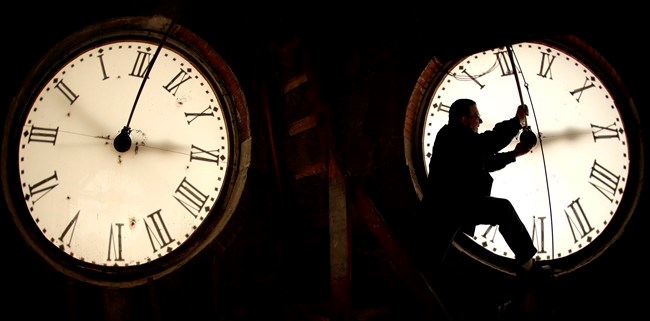While most of the city slept, Victoria travelled ahead in time, springing into daylight time. The clock moved ahead one hour at 2 a.m. today.
It’s an annual rite of spring, and while it brings the promise of blooms and more daylight hours, there is a downside.
“It definitely has an effect on the workforce. The disruption in sleep patterns has an effect and probably for a couple of days afterward,” said Frank Bourree principal of Chemistry Consulting, whose GT Hiring Solutions division is the largest human resources consulting firm in B.C.
Bourree said grogginess and drowsiness are to be expected, but that is a small price to pay.
“Spring puts a spring in your step, the more sunshine and daylight you have, you tend to see productivity growth at the other end,” he said.
“It’s a bit of a wash.”
Terry Power, professor of strategic and advanced international studies at Royal Roads University’s Faculty of Management said while some may debate the need for the time change, there’s not much Canada can do about it as it cannot afford to be out of step with its largest trading partner.
“The economic reality is we can do nothing about it whether we want to or not,” he said, noting the U.S., which also springs ahead, is the recipient of about 72 per cent of our trade.
“If you cut an hour out and you’re out of sync … there’s a potential 25 per cent impact on your [gross national product].”
According to Timeanddate.com — which pulls together information on times, dates, weather and moon phases — the switch to daylight time sometimes coincides with an increase in heart attacks and road accidents in the days following the switch.
The increase in heart attacks was noted in a Swedish study in 2008. It showed a slight increase in the incidents of myocardial infarction in the days following the time change, likely due to increased stress and change in sleep rhythm.
A 1996 study in the New England Journal of Medicine showed an increase of eight per cent in the number of motor vehicle accidents on the Monday after the spring time change.
According to WebMD.com, it’s estimated it generally takes about a day to adjust to each hour of change.
Most of Canada jumped ahead overnight.
The time change doesn’t apply to Saskatchewan, which remains on central standard time year-round.
Other parts of Canada that keep to standard time year-round include a section of northeastern B.C., the East Kootenay region of southeastern B.C., three communities in the Central Time Zone in northwestern Ontario, the eastern tip of Quebec, and Southampton Island in Nunavut.



